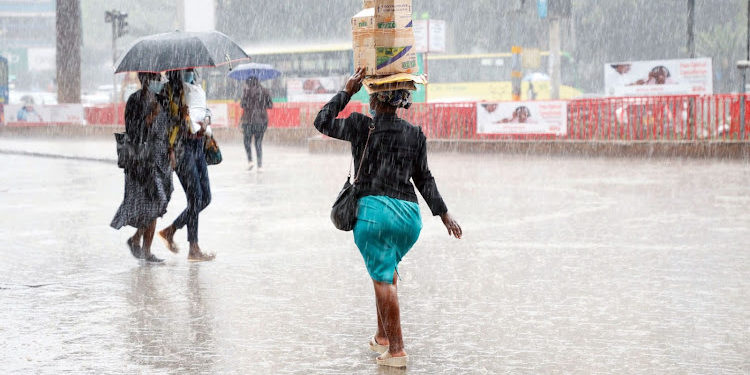Director David Gikungu of the Kenyan Meteorological Department has cautioned the public regarding an impending heavy rainfall event expected to surpass 20mm within the next 24 hours.
Gikungu specified that the areas likely to be affected encompass the South Rift Valley, Lake Victoria, Highlands West, and Central Highlands regions. These regions include Narok, Nakuru, Bomet, Kericho, Kisii, Nyamira, Migori, Homa Bay, Siaya, Kisumu, Nandi, Vihiga, Kakamega, and Busia, as well as Bungoma, Trans Nzoia, West Pokot, Turkana, Marsabit, Uasin Gishu, Kiambu, Nyeri, Murang’a, Nairobi, Machakos, Kajiado, and Taita Taveta.
The onset of heavy rains is anticipated to commence from Monday, February 26, with forecasts suggesting a progression towards the Southeast lowlands by Tuesday and Wednesday, subsequently diminishing in intensity by Thursday.
Moreover, the forecast warns of accompanying gusty winds exceeding 10 meters per second in Northwestern regions, which may result in structural damages such as roof blow-offs and uprooted trees.
Residents residing in areas expected to receive heavy rainfall are advised to remain vigilant against potential floods and flash floods. Gikungu emphasized the possibility of floodwaters emerging even in regions with minimal rainfall, particularly downstream areas.
To mitigate risks, residents are cautioned against driving or walking through moving water, seeking shelter under trees, or near grilled windows to minimize exposure to lightning strikes.
Further updates on weather conditions will be provided in due course, Gikungu assured.
Additionally, meteorologists from the Nairobi-based Igad Climate Prediction and Applications Centre have forecasted a greater than 70 percent chance of above-normal rains during the March-May long rains season.
The onset of the heaviest rainfall is expected in April, tapering off by May, with initial showers anticipated in southern Kenyan areas bordering Tanzania before spreading towards central and western Kenya.
Dr. Hussen Endris, a climate modeling impact specialist from Icpac, highlighted the likelihood of wetter than normal conditions, particularly in western Kenya and areas bordering Uganda, South Sudan, and Ethiopia.
Gikungu also addressed speculations regarding the transition from the waning El Nino to La Nina, which typically brings dry weather to Kenya.
He acknowledged the uncertainty surrounding this transition, noting the observations made by non-climate experts suggesting a shift to La Nina based on past experiences.
In line with Icpac’s forecast, several parts of Nairobi experienced light showers on Saturday morning, hinting at the imminent onset of the planting season as the country prepares for the anticipated rainfall.
















